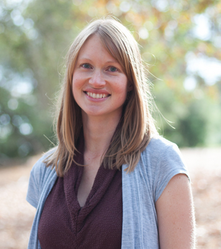Dr. Amy Shekarchi, a pediatrician based in Los Angeles, CA, was helping to lead the rollout of ACEs screening among 50 health care providers at six clinics affiliated with the L.A. County Department of Health Services when the COVID-19 pandemic hit—days before she was set to launch the effort.
“We had trained everybody in doing face-to-face [ACEs screening], and when COVID-19 happened we thought, let’s not throw the screening out. Everybody was ready,” says Shekarchi, who is the pediatric primary care director at Olive View-UCLA Medical Center.
Adverse childhood experiences is a term that stems from the landmark Centers for Disease Control and Prevention/Kaiser Permanente Adverse Childhood Experiences Study (ACE Study) of 17,000 adults that found a relationship between 10 types of childhood traumas, such as any type of abuse or neglect, and adult-onset of chronic health conditions. Many other types of ACEs — including racism, bullying, a father being abused, and community violence — have been added to subsequent ACE surveys. (ACEs Science 101; Got Your ACE/Resilience Score?)
The ACE surveys — the epidemiology of childhood adversity — are one of five parts of ACEs science, which also includes how toxic stress from ACEs affects children’s brains, the short- and long-term health effects of toxic stress, how toxic stress is passed on from generation to generation, and research on resilience, which includes how individuals, organizations, systems and communities can integrate ACEs science to solve our most intractable problems. Research has shown how interventions — such as parent education, family therapy, building resilience, providing children and families with basic needs — can offset the impact of toxic stress from ACEs.
Shekarchi and her colleagues are among many health care providers who are answering the call by the State of California to promote universal trauma screening of its residents, beginning with the state’s 13.5 million adults and children who are served by the state’s Medi-Cal program. Since January, the state has been providing a $29 reimbursement for each person on Medi-Cal who is screened.
And Shekarchi is crystal clear about why screening for ACEs is so essential. She recalls first learning about the ACE Study in medical school and wasn’t surprised when she learned about the links between childhood trauma and health conditions in adulthood: “I had personal experiences with ACEs and it made sense. But I did think if [the ACE Study] was something that was known, why weren’t more people doing more about it?”
The question now is: How do you do ACEs screening and provide various kinds of support during a pandemic? Physicians, like Shekarchi are just beginning to figure this out.
Initially, Shekarchi put the screenings on hold when clinics had to switch from doing mostly in-person visits to conducting appointments by phone or video. (They still make sure that families with young infants bring them in for necessary immunizations.) But she and her peers soon concluded they would have to find a new way to conduct the screenings over the long term.
“We realized that telephone visits and decreased face-to face [interactions] are not going to go away,” she says. “This is the new normal.”
For the last three weeks, Shekarchi has been testing screening-by-phone on about 50 patients.
She’s using a version of the pediatric ACEs screening tool approved by the state known as the PEARLS tool. (It stands for PEdiatric ACEsRelated Life-events Screener.) The version of PEARLS she’s using is de-identified, which allows patients to count up the number of ACEs that apply to them rather than disclosing specific ACEs that they’ve experienced. Shekarchi also included additional questions about transportation, legal assistance, and needs related to school and employment resources. And the call also includes a state-required questionnaire, the Staying Healthy Assessment (SHA). The SHA asks age-specific questions about physical, dental, and mental health and safety (Infant: Do you place your child in a rear-facing car seat in the back seat? Teen: Do your wear a seat belt?).
“The idea is if you blend ACEs screening with other age-appropriate [screeners], it’s thought of as just a normal screening tool,” Shekarchi says. That thinking of combining ACEs screening with other screenings was also part of their overall initial plan for their ACEs screening, which was going to be done during well-child visits.
The scripts they are testing for the phone calls begin something like this: “I have several screening tools I’m going to go through with you. The SHA, which is required by the state, will help us better understand your health. And the ACEs screening will help your doctor better understand your past and your needs so he or she can help you have a healthy future.”
As part of her research in developing ACEs scripts for remote visits, Shekarchi consulted with team leaders from a learning collaborative known as CALQIC, the California ACEs Learning and Quality Improvement Collaborative, which is advancing ACEs screening and training for California health care providers. CALQIC is a project of the Surgeon General of California’s ACEs Aware initiative funded by the California Department of Health Care Services. She also reached out to the American Telemedicine Association. In addition to getting these guidelines, one thing she learned was how to determine if a teenager on the phone feels safe answering sensitive questions.
“You ask [directly], ‘Are you in a safe place? I have some private questions to ask you.’ The truth is, you can’t guarantee that [they are], but if they say yes, you can proceed and pay attention to other signs of a shift,” Shekarchi says. “If it sounds like there are other people who have come in the room, or if you’re on a video call and you can see somebody in the room, then you say that you don’t think it’s the best time to proceed.”
At the beginning of the calls, Shekarchi says that patients are reassured that the information is confidential and will only be shared with health care providers. But if a patient feels uncomfortable or as if they’re in some kind of danger, there’ll be a conversation about who else needs to be involved. And if the caller thinks there might be potential for immediate danger, they’re trained to call the health care provider or social worker on the team.
Like Shekarchi, Jessicca Moore, a nurse practitioner and the associate clinical director of the Petaluma Health Center in Petaluma, California reasoned that the shift to predominantly remote visits is not for the short term.

“Our team met a week and a half ago and we’re thinking about how to do [ACEs screening] in the current environment because we’re going to be here for a while,” says Moore. She says they’ve asked CHADIS, an online clinical support system, to add the PEARLS screen to their available questionnaires in the hopes of using that platform.
In the interim, they’re taking an education-first approach, and have added information to their website that includes the PEARLS screening tools in English and Spanish, as well as education materials about toxic stress, ACEs and resilience.
“So first we’ll pilot texting parents [the webpage link] ahead of their [virtual] visit so they can do the PEARLS screen before their visit.” During the visit, explains Moore, they’ll ask patients for their score (they’re also using the de-identified version), and will engage in brief education about ACEs, answer questions and make referrals if necessary.
Shekarchi, the Los Angeles-based pediatrician, says of their ACEs screening thus far: “We’re just testing it out to see what the responses are, what the patient’s tone and demeanor are, how long it takes to ask all of the questions.” And then they’ll figure out how to move forward.
Stay tuned: I’ll be doing subsequent stories about how physicians adapt ACEs screening to virtual practices.


Comments (0)